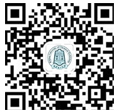报告名称:Solvent-Free Nanofluids for Soft Organic-Inorganic Hybrid Materials
时间:2017.2.22 9:30-11:30
地点:图书馆中心会议室
报告内容:Solvent-free nanofluids obtained by autocondensation of organo-trialkoxysilanes on nanoparticle (core) templates and surface decorated with both ionic liquid organic salt groups and with various reactive groups are exotic cross-linking agents that define new types of resins and nanocomposite materials. Such agents can be used to counter embrittlement provided by nanofillers while increasing toughness. We show that such materials can be used to produce thin films including UV protective clearcoats and an interesting new family of adhesives/sealants. Such reactive “inks” provide building blocks for additive micron scale additive printing (manufacturing) and for designing new soft materials. We also show that auto-condensation of such organoalkoxysilanes, followed by suitable anion exchange, produces solvent-free nanofluids that exhibit classical liquid properties with some distinct differences. We observe heat capacity anomalies manifested as lambda transitions in excess heat capacity centered around a glass transition (Tg) and around a freezing transition. The Tg-proximal lambda transition is the first experimental realization of an enthalpic phase transition overlying a glass transition. The existence of such a connection or coincidence has undergone decades of theoretical conjecture. The second anomaly spanning the melting/freezing range is the first reported excess enthalpy ever reported for an experimental particulate fluid undergoing a phase transition. The integral enthalpy from these lambda transitions is quantitatively accounted for by the gain of specific surface area of the particles, and the associated surface free energy, upon freezing and upon cooling beneath the glass transition temperature. This system also is the first experimental particle system reported that exhibits multiphase coexistence that otherwise is frustrated from crystallizing due to polydispersity. This new material and cousins to be similarly derived promise to become useful in developing soft-sphere potentials in the thermodynamics of polymeric liquids.
报告人简介:John Texter is Professor of Polymer and Coating Technology at Eastern Michigan University. He has been Editor-in-Chief of the Journal of Dispersion Science and Technology, Associate Editor of the Journal of Nanoparticle Research, and Section Editor for Applications of Current Opinion in Colloid and Interface Science, in which he has subsequently edited a special issue on Colloidal Graphene. He has worked for and consults through Strider Research Corporation, and he has worked for Eastman Kodak Company in various areas of dispersion and emulsion technology. He received his undergraduate engineering education and his PhD in Chemistry from Lehigh University, where he studied at the Zettlemoyer Center for Surface and Coatings Research. He is an experienced lecturer, organizer, and technical project manager. He is an inventor, editor, and author of over 200 publications including five books, 46 issued U.S. patents, and numerous research and review articles. He has received numerous awards and honors and he has served as Chairman of the ACS Division of Colloid and Surface Chemistry, of the Chemistry at Interfaces Gordon Conference, of the Chemistry of Supramolecules and Assemblies Gordon Conference, and of many international symposia. He is a guest Chair Professor at the School of Chemistry and Chemical Engineering of Soochow University and has been a visiting professor at the Max Planck Institute for Colloids and Interfaces in Potsdam where he was a Max Planck Society Fellow, and at the Graduate School of Science and Technology, Kumamoto University. His research focuses on stimuli-responsive polymers, particles, and materials and the general area of dispersion science and practice.

